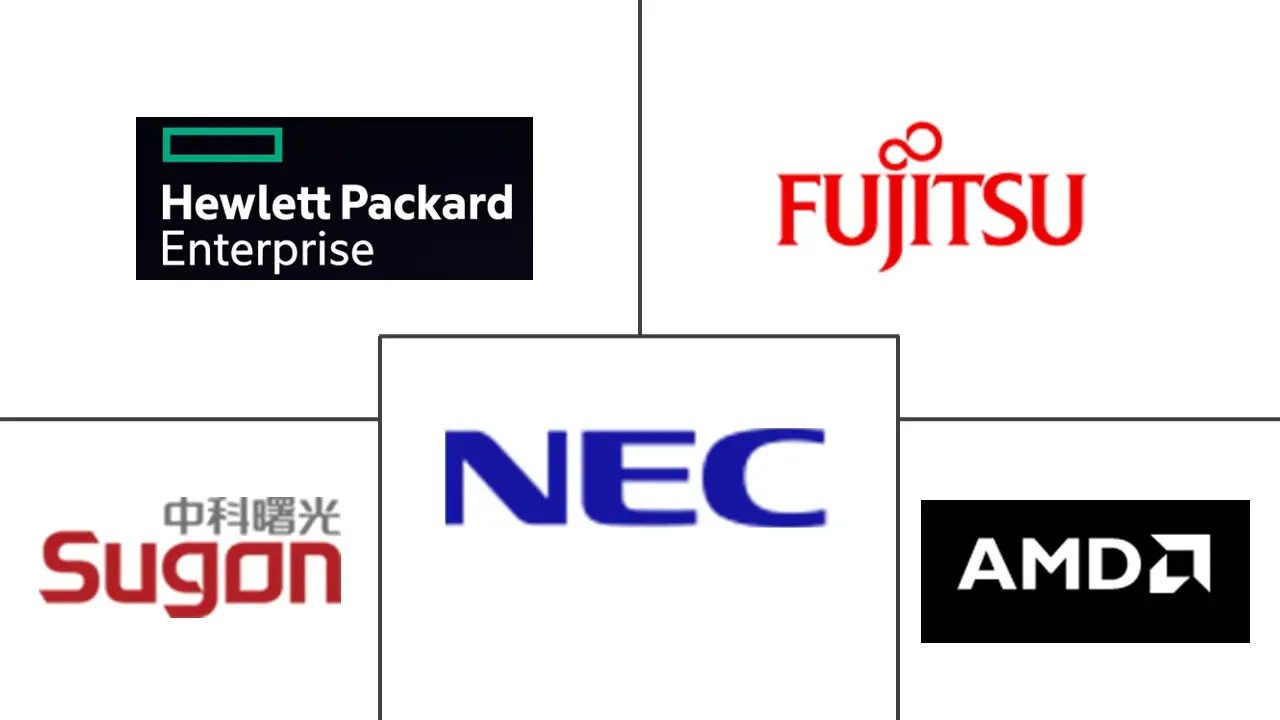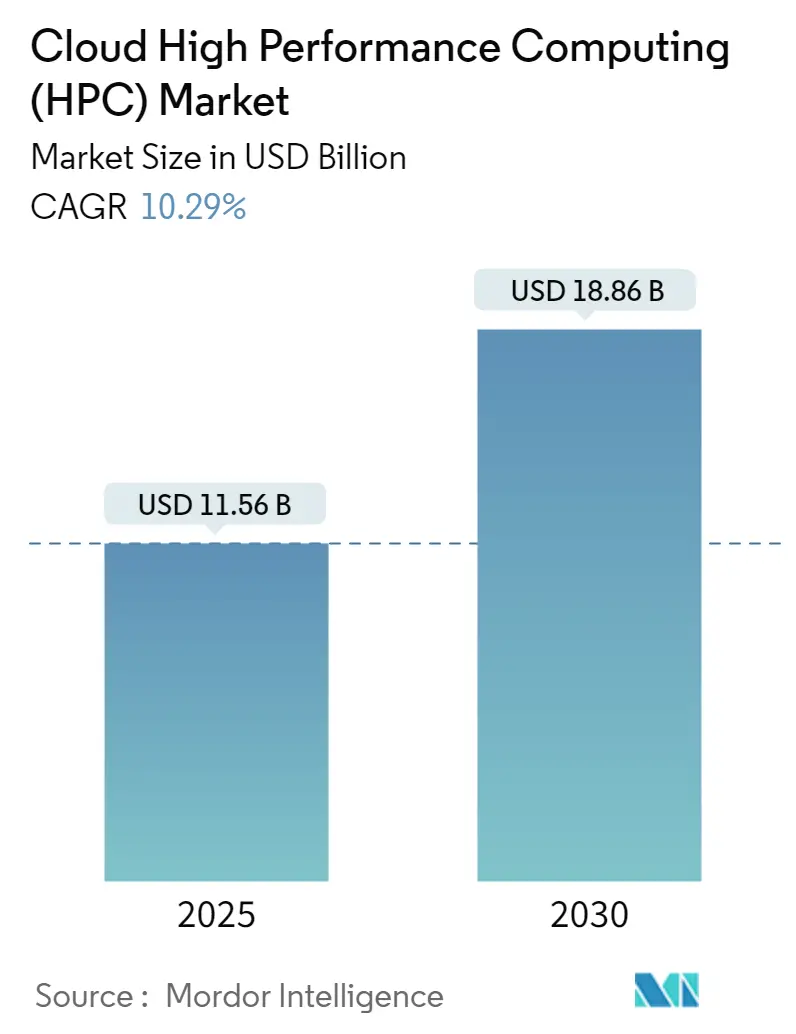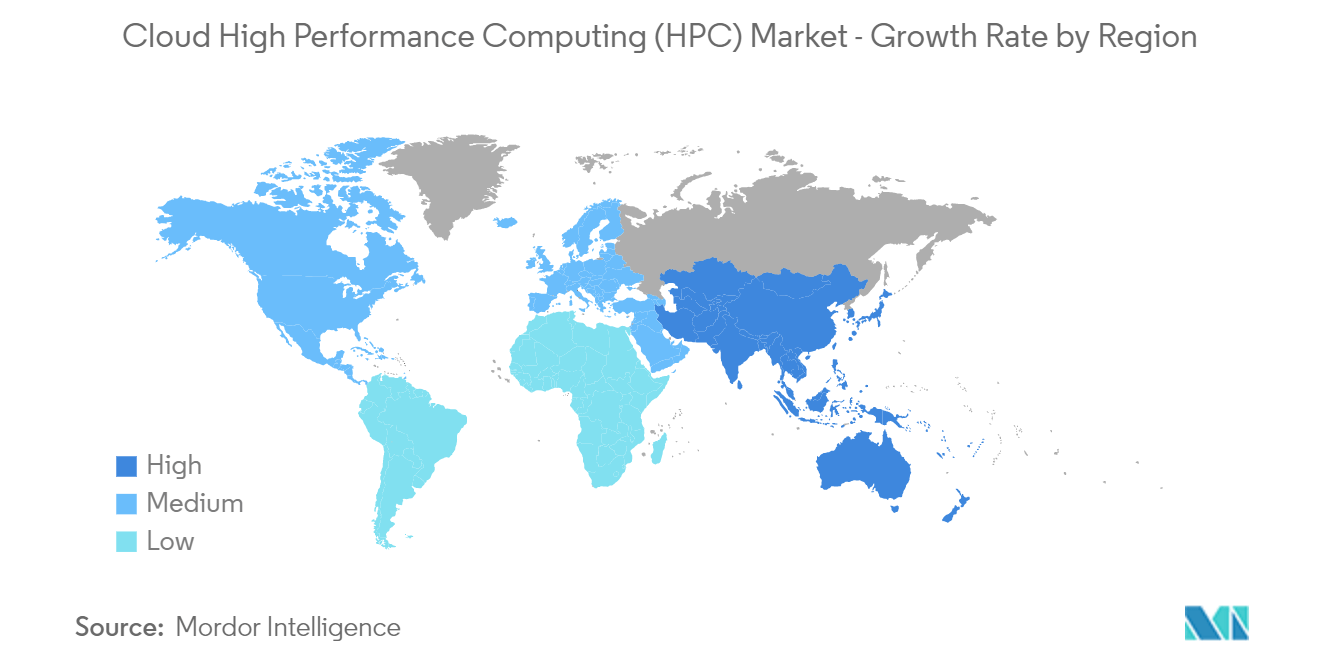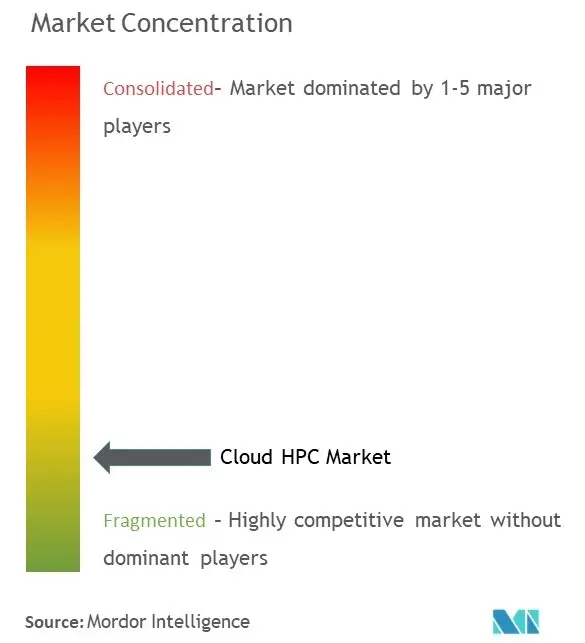Cloud High Performance Computing (HPC) Market Analysis
The Cloud High Performance Computing Market size is estimated at USD 11.56 billion in 2025, and is expected to reach USD 18.86 billion by 2030, at a CAGR of 10.29% during the forecast period (2025-2030).
The emergence of big data and complex applications, such as ultra-high definition workflows, electronic design automatic simulations, etc., across various industries, is driving growth in the market.
- Artificial Intelligence, Machine learning, IoT, and 3D imaging generate large volumes of data, which HPC is essential for managing. HPC is also required for real-time data processing during live broadcasting of a sporting event, as well as for analyzing market patterns, following a growing storm, and testing new products.
- Faster processing capabilities of microservers or HPC systems increased performance efficiency, and smarter deployment and administration with high-quality service are some key factors driving the growth of the HPC industry. Physical simulation, optimization, and machine learning (ML) in various industrial applications, including financial modeling and life science simulation, are examples where HPC plays a critical role in solving complex problems within time. In the automotive industry, EVs, autonomous vehicles, and connected vehicles are continuously taking development challenges to enter the market and require edge computing capabilities to be incorporated in these solutions driving the market.
- In genomics research, the demand for high-performance computing (HPC) devices is rapidly growing. These technologies aid researchers identify and analyze genetic variations linked to various disorders and their responses to therapies. Genomic sequencing examines all forms of genetic changes throughout the entire genome. HPC systems provide significant speed, reliability, and precision, which aid in the practical analysis of massive amounts of sequencing data in genomic research activities. As a result, the introduction of Next Generation Sequencing (NGS) technology allows for investigating and identifying several areas of human health using various omics methodologies.
- Recently, various organizations have accessed HPC systems, raising concerns about data hacking. HPC systems are vulnerable, which has resulted in many possible security vulnerabilities. Furthermore, because of the clustered environment and varied capabilities, HPC systems require various management systems to operate. As a result, the rising concern over data integrity and cyber-attacks are restraining the growth of the High-Performance Computing Market.
- Data consumption and cloud demand have skyrocketed since the outbreak of COVID-19, owing to enterprises moving toward remote working and shifting their workloads onto the cloud. The demand for HPC saw significant growth, especially in bioscience, as HPC was used to develop a vaccine and tackle the effects of the pandemic. After the pandemic, the market is growing rapidly due to digitization and increased usage of HPC in various end-user applications.
Cloud High Performance Computing (HPC) Market Trends
Increasing Adoption of HPC in the Cloud Driving the Market
- Adoption of HPC on the cloud would drive growth. Transferring data to analyze it adds another layer of complication. The platform should integrate all existing data sources in an organization to detect hidden threats and make better risk-based choices while leaving the data alone. This should ideally include an integrated search program that can scan all sources, including third-party sources, for threat indications. In June last year, Marvell introduced the OCTEON 10 DPU designed for security, networking, and storage workloads working toward 5G, cloud, carrier, and enterprise data center applications. Marvell's OCTEON 10 DPU combines hardware acceleration, data path bandwidth, and I/O offerings, including PCIe 5.0 and DDR5.
- Although cloud-based solutions are becoming one of the most viable options for various applications since they provide the storage and computation needs for users at a relatively low cost, the area still needs to include appropriate security measures to protect the data and applications for cloud users.
- Furthermore, in February this year, IBM purchased Sentaca, a telecommunications consulting services and solutions supplier, to expand its hybrid cloud consulting business in the communications service provider area and develop scalable, cloud- and edge-enabled process automation and process safety solutions.
- Setting up an on-premise system is comparatively expensive, requiring significant upfront investments in product licenses, equipment, and IT services. Cloud-based technologies are, in comparison, extremely flexible and cost-effective for organizations to avoid spending much on hardware and software and human resources to manage both.
- According to a survey conducted by platform9, the single public, hybrid, and on-premises clouds were organizations' major significant environments to run their workloads. As of August this year, Single public-cloud deployments presented 32.1 percent of cloud deployment.
Asia Pacific is Expected to be the Fastest Growing Market
- The adoption of high-performance computing (HPC) has grown in the Asia-Pacific region for processing large volumes of data and executing complicated computations, analytics, simulations, and artificial intelligence (AI) at fast rates. However, the initial capital investment has been too expensive for many businesses, opening the path for HPC as a service. Instead of acquiring or leasing hardware and software, businesses subscribe to it through a pay-as-you-go consumption model in this strategy. And is widely used in various industries for applications ranging from computer-aided design and engineering to autonomous driving, production optimization, predictive maintenance, drug discovery, precision medicine, fraud and anomaly detection, treasury and trading analytics, IoT/smart cities, and many others.
- The surging demand for short product development cycles (PLCs) and persistent quality becomes nearly impossible to address in real time without using the right tools and advanced technologies. The adoption of high-performance computing (HPC) systems, with computer-aided engineering (CAE) software for high-fidelity modeling simulation, is on the rise among various industries, such as automotive, discrete manufacturing, and healthcare robotics, has increased in the Asia-pacific region.
- For instance, In October this year, Subaru Corporation headquarters, located in Japan, shifted its simulation and 3D visualization workloads responsible for increasing collision safety performance and driving performance to Oracle Cloud Infrastructure. With High-Performance Computing (HPC) on OCI, Subaru could optimize its development cycle, achieve significant efficiency, and cut operating expenses by lowering computational times by approximately 20%.
- Cost remains a significant barrier for many businesses and organizations using advanced computing technologies-companies in this region like Fujitsu Limited Digital Annealer and high-performance computing (HPC) in their operations. In April this year, Fujitsu's CaaS portfolio will provide consumers quick access to various services to solve this issue. Fujitsu announced the introduction of its "Fujitsu Computing as a Service (CaaS)" service portfolio to accelerate digital transformation (DX) and empower clients globally by providing commercial access to some of the major global powerful computing technologies through the cloud.
Cloud High Performance Computing (HPC) Industry Overview
The cloud high-performance computing market is very competitive because of many significant players, like Advanced Micro Devices Inc., NEC Corporation, Hewlett Packard Enterprise, Sugon Information Industry Co. Ltd, Fujistu Ltd, etc. Product launches, high expenses on research and development, partnerships and acquisitions, etc., are the prime growth strategies these companies adopt to sustain the intense competition.
In May 2022, Hewlett Packard Enterprise and SiPearl, a company developing a high-performance and low-power microprocessor for European exascale supercomputers, established a strategic partnership to develop HPC solutions. The collaboration will assist and accelerate the deployment of exascale systems in Europe by expanding heterogeneous computing alternatives for supercomputing and using European architectures.
Cloud High Performance Computing (HPC) Market Leaders
-
Advanced Micro Devices Inc.
-
NEC Corporation
-
Hewlett Packard Enterprise
-
Sugon Information Industry Co. Ltd
-
Fujistu Ltd
- *Disclaimer: Major Players sorted in no particular order
Cloud High Performance Computing (HPC) Market News
- April 2022 - CGG is significantly expanding its high-performance computing (HPC) capacity and accompanying service offerings to enable continuous distinction in its core business and speed up the development of new operations. The business has acquired a lease to construct a European HPC hub in Southeast England, which would go live in H1 2023 and expand its cloud HPC capacity by up to 100 petaflops.
- February 2022 - Ansys established a strategic partnership with Amazon Web Services, Inc. The partnership would allow Ansys products to be deployed on AWS, making simulation workloads more user-friendly while also providing scalability and flexibility with simple access to software and storage solutions from anywhere via a web browser, and the collaboration extends cloud-based high-performance computing (HPC) to promote electronic design automation (EDA), computer-aided engineering (CAE), and simulation solutions.
Cloud High Performance Computing (HPC) Industry Segmentation
High-performance computing (HPC) aggregates computing power to deliver much higher performance than a typical desktop computer or workstation to solve significant problems in science, engineering, or business.
The study segments the market by component into hardware, software, and services. Under the hardware segment, servers, storage devices, systems, and networking devices are considered; Consultation, training, and maintenance services are considered under the scope of services segment.
Further, the market is segmented by deployment, i.e., on-premise and cloud. The solutions deployed on the cloud, using cloud computing standardizations, are considered under the scope of the cloud segment.
In terms of end-user application, the study covers aerospace and defense, energy and utilities, BFSI, media and entertainment, manufacturing, life science and healthcare, and other industrial applications.
The end-user applications are quite dynamic, and the market is evolving with the emergence of new tech and the adoption of AI capabilities. The Lifesciences segment, for instance, has received a great push during the COVID-19 pandemic, while the other end-user applications suffered a setback in demand.
The market sizes and forecasts are provided in terms of value (USD billion) for all the above segments.
| By Component | Hardware (Servers, Storage Devices, Systems, and Networking Devices ) |
| Software and Services | |
| By Deployment Type | On-premise |
| Cloud | |
| By Industrial Application | Aerospace and Defence |
| Energy and Utilities | |
| BFSI | |
| Media and Entertainment | |
| Manufacturing | |
| Life Science and Healthcare | |
| Other Industrial Applications | |
| By Geography | North America |
| Europe | |
| Asia-Pacific | |
| Latin America | |
| Middle East & Africa |
Cloud High Performance Computing (HPC) Market Research FAQs
How big is the Cloud High Performance Computing (HPC) Market?
The Cloud High Performance Computing (HPC) Market size is expected to reach USD 11.56 billion in 2025 and grow at a CAGR of 10.29% to reach USD 18.86 billion by 2030.
What is the current Cloud High Performance Computing (HPC) Market size?
In 2025, the Cloud High Performance Computing (HPC) Market size is expected to reach USD 11.56 billion.
Who are the key players in Cloud High Performance Computing (HPC) Market?
Advanced Micro Devices Inc., NEC Corporation, Hewlett Packard Enterprise, Sugon Information Industry Co. Ltd and Fujistu Ltd are the major companies operating in the Cloud High Performance Computing (HPC) Market.
Which is the fastest growing region in Cloud High Performance Computing (HPC) Market?
Asia Pacific is estimated to grow at the highest CAGR over the forecast period (2025-2030).
Which region has the biggest share in Cloud High Performance Computing (HPC) Market?
In 2025, the North America accounts for the largest market share in Cloud High Performance Computing (HPC) Market.
What years does this Cloud High Performance Computing (HPC) Market cover, and what was the market size in 2024?
In 2024, the Cloud High Performance Computing (HPC) Market size was estimated at USD 10.37 billion. The report covers the Cloud High Performance Computing (HPC) Market historical market size for years: 2019, 2020, 2021, 2022, 2023 and 2024. The report also forecasts the Cloud High Performance Computing (HPC) Market size for years: 2025, 2026, 2027, 2028, 2029 and 2030.
Our Best Selling Reports
Cloud High Performance Computing Industry Report
Statistics for the 2025 Cloud High Performance Computing (HPC) market share, size and revenue growth rate, created by Mordor Intelligence™ Industry Reports. Cloud High Performance Computing (HPC) analysis includes a market forecast outlook for 2025 to 2030 and historical overview. Get a sample of this industry analysis as a free report PDF download.







